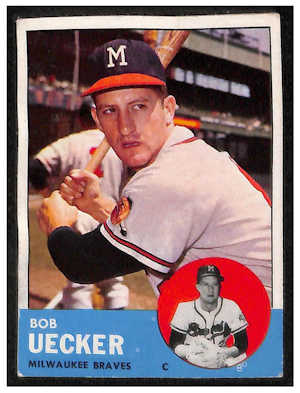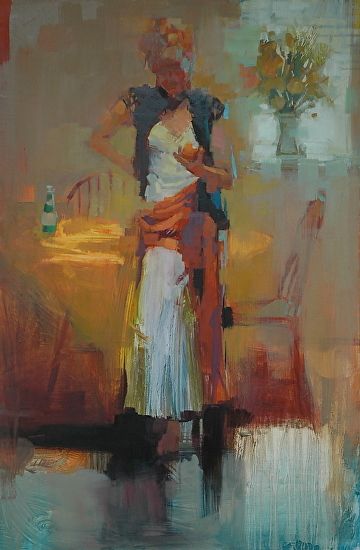A Scientifically Proven Drawing and Painting Lesson

This drawing and painting lesson begins on the playground of my youth.
When I was in elementary school one of the popular hobbies, among boys at least, was collecting baseball cards.
At my peak I had around 300 baseball cards in my collection and way too much chewing gum.
Visual Memory
As a serious playground baseball card collector, you quickly found that as you bought more and more of these 5-card packs, you would always end up with a fist full of duplicates of players you already had.

So, you would try to trade your duplicates with other kids on the playground for the players you wanted in your collection.
And here’s why I mention this.
Every kid could look at the card you wanted to trade and know whether they already had it or not.
One image out of the possibly hundreds in their possession.
Think about how amazing that is.
Well, an important part of this drawing and painting lesson is I’m going to show you that everyone has this capacity for visual memory...
...and how this capacity for visual memory can free more of your creativity in your drawings and paintings.
Read on...
Even More Amazing Visual Memory
As it turns out, my playground example of our capacity for visual memory is only the tip of the iceberg.
In the 1960’s memory researchers did a study where they had students look at 612 magazine ads. Then they asked the students to identify the pictures from these ads when shown a new mixture of images. The students correctly identified the first images they’d seen 98.5% of the time.
That convinced the researchers to take the study much further.
They got student volunteers to sit in a dark room for 5 days looking at ten thousand images in a row. At the end of the study, the students correctly identified 83% of the previously seen images.
Now, you might be asking yourself: That’s all very interesting but how does this drawing and painting lesson apply to me and my art?
Think about this. How could you take advantage of this visual memory ability we all have?
Could it help you create more imaginative art and, maybe, even help you find your own style?
The Crucial Part of This Drawing and Painting Lesson
You’ve now seen that our capacity for visual memory is extraordinary.
And it’s important to understand that almost anything you choose to draw or paint...
...a viewer of your work has seen it before. Probably many, many times from many different angles. And remembers those images.
So, you can depend on a viewer’s visual memory while creating your art.
Here’s how...
Even if you don’t show very much of a thing in your art...
Even if you change its color...
Even if you make it darker or lighter than it really is...
And often, even if you intentionally change its shape a bit, the viewer’s mind will understand. It will still recognize whatever you’ve drawn or painted.

Let me use this painting by Michael Steirnagle as an example.
Notice how little detail he shows. A few simple strokes of paint and you see chairs at a small table.
A few simple daubs of paint and you see a vase of flowers on a windowsill.
And the star of this picture...
A woman depicted very, very simply...no face...no feet...not even any legs really.
Yet you know exactly what he has painted.
Michael Steirnagle has totally depended on your visual memory to recognize everything in this art.
Your visual memory has allowed him to paint the way that feels most satisfying to him.
He doesn’t need to be totally realistic. He doesn’t need to be very detailed.
Your visual memory has allowed him to use much more of his creativity in his art and find his own style.
Where You Fit In All This
The crucial basis of this drawing and painting lesson is this. You can use a viewer’s visual memory to free more of your creativity too.
You can be realistic and detailed if that’s what pleases you.
Or you can be almost abstract in your art.
Or some style of painting or drawing in between those two extremes.
You aren’t confined to any one style.
Being able to depend on a viewer’s visual memory frees you to find your own way of working.
Best Wishes,
Gary Gumble
Founder of BeginningArtist.com
Without art the crudeness of reality would make the world unbearable. (George Bernard Shaw)
P.S. But what if you want to create something entirely from your imagination?
What if it’s different than most people have ever seen before?
Here again is an important part of this drawing and painting lesson.
The viewer’s mind will look for similarities between what you’ve drawn or painted and the pictures in his or her visual memory.
Then it will make an educated guess as to what you have created.
And even if that guess is not quite right, so what?
You’ve drawn the viewer into your creation and gotten him excited by what he sees.
P.P.S. Have a friend who would enjoy this article? Send it to them and invite them to join my blog. Click here to Subscribe.
Copyright Gary Gumble 2023 All rights reserved About Privacy Policy Terms of Use Contact www.beginningartist.com 27 rue Roucher, 34000 Montpellier, France